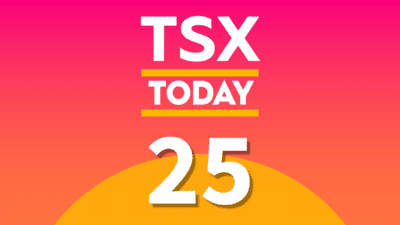With claims that the Canadian housing market is overheated and lurking in bubble territory with a collapse imminent, along with the threat of a slowing Canadian economy because of diminishing demand for commodities, the profitability of Canada’s banking sector is under threat.
With the majority of market share split between them, those banks that will feel the biggest impact will be the Big Five: The Royal Bank of Canada (TSX:RY), Toronto-Dominion (TSX:TD), Bank of Nova Scotia (TXS:BNS), Bank of Montreal (TSX:BMO), and the Canadian Bank of Imperial Commerce (TSX:CM).
Canadian housing market is overvalued
After a long property boom that commenced in 1999, which has seen Canadian housing prices rise by around 133% to date, there are signs that the Canadian housing market is finally cooling. The Economists’ House-price Index indicates that the Canadian housing market is overvalued by 34% by the long-term ratio to average income, and 77% when measured against long-term rents.
That would suggest that the housing market is vulnerable to a steep downward correction, which would have a significant impact on the profitability of Canada’s banks. A key catalyst for such a correction would be a slowing Canadian economy on the back of diminished demand for Canada’s commodity exports which make up a significant percentage of total exports.
A recent Motley Fool article highlights the contagion that a housing market crash would create with Canadian households addicted to debt. Already, household debt as a share of disposable income has hit a record high, and any steep correction in prices would impact the wealth of many Canadians making not the housing bubble but the high degree of leverage of households the key risk.
Taking the brunt
Obviously, a steep contraction in Canadian housing prices would have a significant negative impact on the performance of Canada’s banks, as demand for credit dries up and non-performing loans rise. With 65% of total market share of Canada’s mortgage market, the Big Five would be under threat.
| Rank | Lender | Mortgage Book | Market Share |
|
1 |
Royal Bank of Canada |
$198 billion |
17% |
|
2 |
Scotiabank |
$187 billion |
16% |
|
3 |
Toronto-Dominion |
$176 billion |
15% |
|
4 |
Canadian Bank of Imperial Commerce |
$147 billion |
13% |
|
5 |
Desjardins |
$87 billion |
7% |
|
6 |
Bank of Montreal |
$83 billion |
7% |
Source data: Canadian Mortgage Trends.
Despite Scotiabank being the second-largest mortgage originator in Canada, I do not believe that its profitability will be as severely impacted by a housing market downturn. Unlike the other Big Five banks, Scotia has a strong commercial banking presence in high-growth emerging markets, with significant operations in the fast-growing Latin American economies of Colombia and Peru. This compares to TD, RBC, CIBC, and Bank of Montreal that have exclusively focused their commercial banking operations in Canada and the U.S.
These other four banks don’t have access to the lucrative growth opportunities that exist in Latin America and in particular Peru, which is one of the most under-banked countries in the region. Not only do they miss out on the opportunity, they are more highly exposed to the impact of a slowing Canadian economy or housing market correction.
A not so Canadian bank
The cornerstones of Scotia’s international operations are its controlling interest in Colombia’s fifth-largest bank, Colpatria, as well as a controlling interest in Mexico’s seventh-largest bank by assets, Credito Familiar. But Scotiabank’s flagship Latin American operation is in Peru, where it has been operating since 1997 and is now the third-largest lender. This gives Scotia solid exposure in the areas of commercial banking to two of the region’s fastest-growing economies — the IMF forecasts that in 2013 Colombia’s GDP will grow by 4%, Mexico’s by 3.5% and Peru’s by 6%. For comparison, Canada is forecasted to grow by 1.5%
These economies also have a fast growing middle-class, which is causing an explosion in demand for consumer products including demand for banking, insurance, and wealth management products. This is particularly true in Peru, which has seen its middle-class expand by 10% over the past 10 years. Peru also has one of the lowest levels of consumer debt in Latin America, underscoring the growth potential, with loans only representing 26% of GDP compared to 46% in Colombia, 71% in Chile, and more than 128% in Canada.
The significance of these operations for Scotia’s bottom line was underscored by its second-quarter 2013 results, where international banking contributed 34% of the $1.6 billion in total net income that it hauled in. The segment also saw its revenue grow by 16% for the same period and net income was up by 12%, primarily driven by strong loan growth in Latin America. There is little reason to believe this international growth won’t continue.
Scotiabank’s international segment also operates far more cost effectively than a Canadian bank because of lower general and administrative costs. A key contributor to the bank’s solid efficiency ratio of 54%.
Bottom line
There is growing evidence that a housing market correction in Canada is inevitable and a key driver of this will more than likely be Canada’s lower rate of economic growth, with the demand for commodities falling off significantly.
Canada’s Big Five banks will be impacted, but it’s clear that Scotia’s strong international operations, with a focus on Latin America, provide it with other avenues for growth. That should allow it to mitigate the possible effects of a housing slump on its financial performance.
Even though they may feel the pressure of a potential housing squeeze, the Canadian banks remain amongst this country’s elite businesses. Click here now to download our special FREE report that profiles 5 more of this country’s best.
The Motley Fool’s purpose is to help the world invest, better. Click here now for your free subscription to Take Stock, The Motley Fool Canada’s free investing newsletter. Packed with stock ideas and investing advice, it is essential reading for anyone looking to build and grow their wealth in the years ahead.
Follow us on Twitter and Facebook for the latest in Foolish investing.
This post was created by Fool contributor Matt Smith.
Fool contributor Matt Smith does not own shares in any of the companies mentioned at this time. The Motley Fool does not own shares in any of the companies mentioned at this time.







